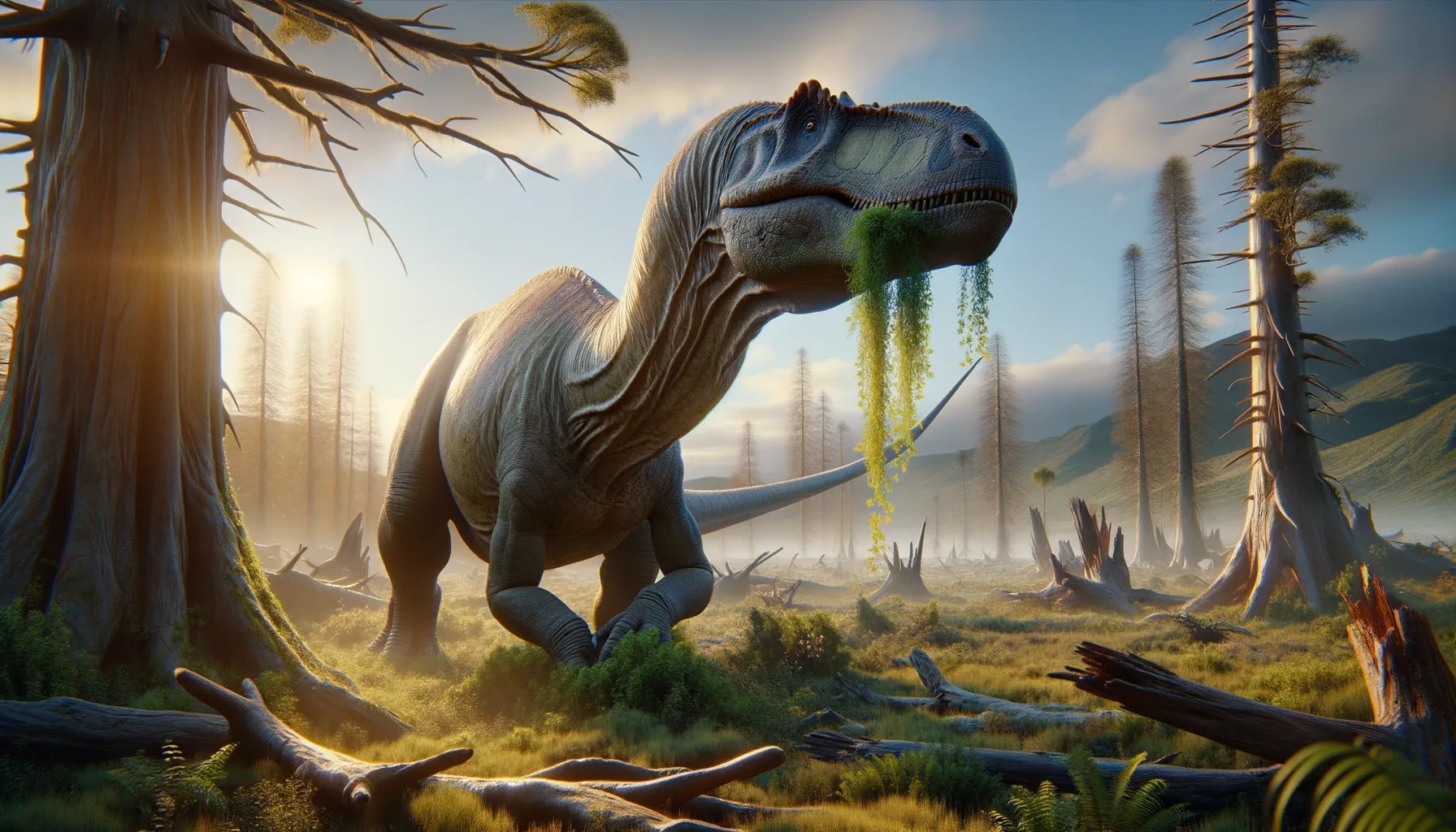
Puertasaurus
The gentle giant of the Cretaceous era.
Period
Cretaceous
Length
Could stretch up to 30 meters in length.
Height
Estimated up to 20 meters tall.
Weight
Approximately 50 to 70 tons.
Puertasaurus was a gigantic sauropod dinosaur that roamed South America during the late Cretaceous period. Its massive size made it one of the largest land animals ever to exist. Known from scant remains, it is believed to have been a slow-moving herbivore, utilizing its long neck to reach vegetation. This astonishing dinosaur provides fascinating insights into the evolution and diversity of sauropods in prehistoric ecosystems.
Diet
Puertasaurus was a herbivore that fed on a variety of plant material. Its long neck allowed it to reach high vegetation, such as leaves from tall trees.
Hunting
As a herbivore, Puertasaurus did not hunt other animals. Instead, it likely spent much of its time foraging for plants in its lush, forested environment.
Environmental challenges
Puertasaurus faced environmental challenges such as finding enough food to sustain its massive body. It also had to deal with climatic changes of its time which could affect plant availability. Additionally, avoiding large predators and coping with harsh weather could have been significant issues in its life.
Speed
Very slow due to its massive size.
Lifespan
Likely several decades, similar to modern large mammals.
First discovery
Discovered in Patagonia, Argentina in 2001.
Fun Facts
- Puertasaurus was one of the largest dinosaurs, with estimates suggesting it could have been over 100 feet long.
- This giant dinosaur lived around 70 million years ago during the Late Cretaceous period.
- Puertasaurus was discovered in Patagonia, Argentina, a hotspot for massive dinosaur fossils.
- Despite its enormous size, Puertasaurus was a herbivore, feasting on the lush vegetation of its time.
- The name Puertasaurus comes from Pablo Puerta, the fossil hunter who discovered this dinosaur.
- Puertasaurus's large vertebrae, some nearly six feet wide, are key to understanding its size and structure.
Growth and Development
The growth of Puertasaurus, similar to other sauropods, would have been rapid in its early years to escape predation. It likely took several years to reach full size, requiring continuous intake of food. Once fully grown, its size would have considerably deterred most predators.
Habitat
Puertasaurus lived in what is now Patagonia, an area characterized by diverse ecosystems. Its habitat included lush forests and river valleys which provided abundant food sources. This environment supported its large size by offering ample vegetation.
Interaction with other species
Puertasaurus coexisted with various other dinosaurs and prehistoric creatures, likely moving in herds for protection. Its massive size would have intimidated many would-be predators. Interactions would primarily have involved avoiding conflict and competing for food and resources.
Natural lifespan
Its natural lifespan would have been similar to modern large herbivores.
Reproduction
Puertasaurus likely reproduced by laying eggs, similar to other sauropods. It is possible that they engaged in some form of parental care, protecting the young from potential threats until they could fend for themselves.
Social behaviour
Puertasaurus may have lived in groups, offering protection and social interaction. Group living would have been beneficial for raising young and avoiding predators. Communal movements could also have maximized foraging efficiency.
Fossil locations
Fossils of Puertasaurus have been found in Patagonia, Argentina. The site of discovery is known for its rich deposits of late Cretaceous period fossils. These remains have provided crucial insights into South American dinosaur fauna.
